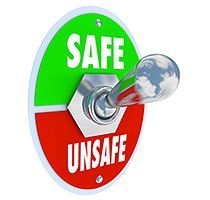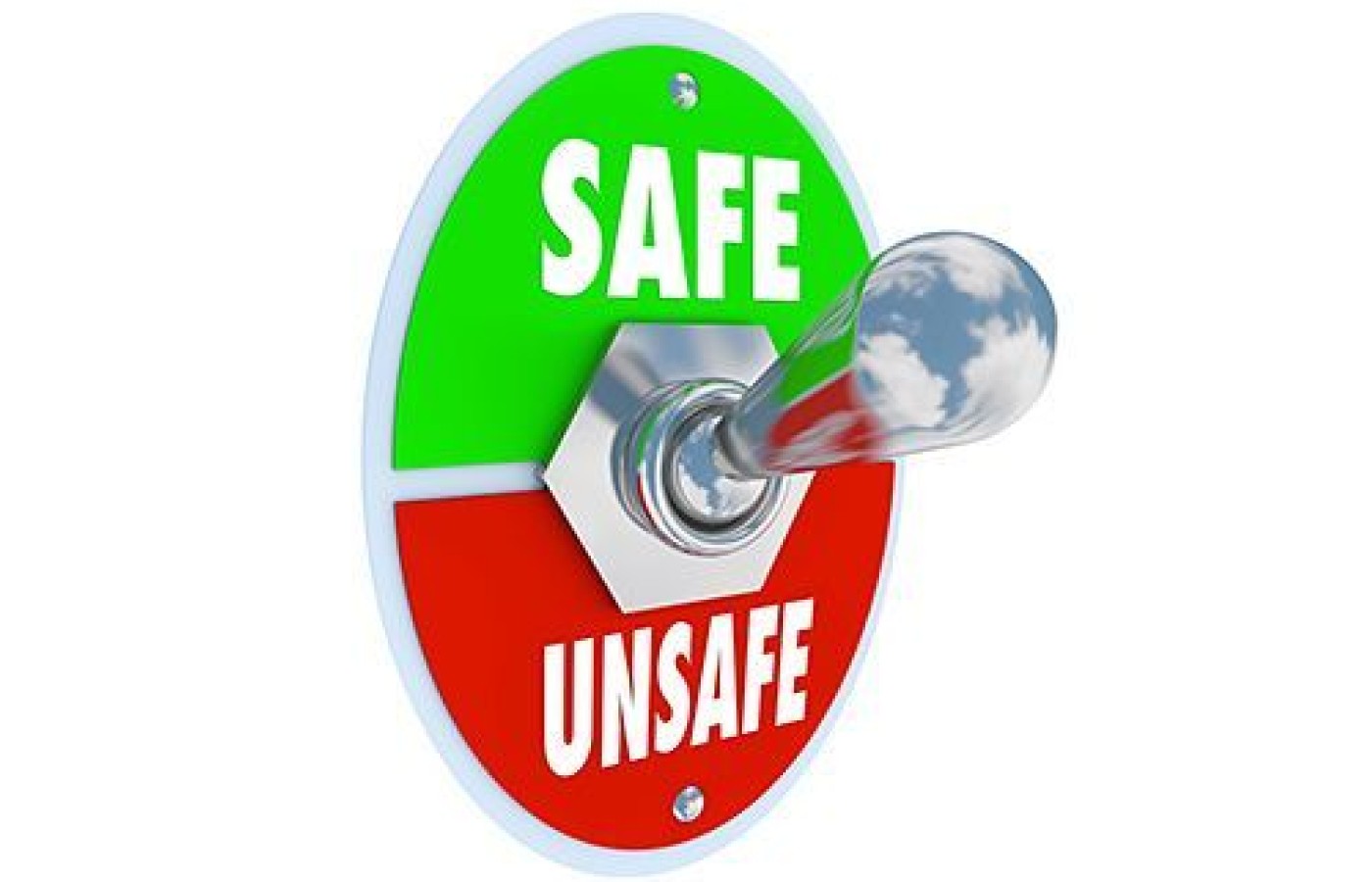Some doctors thrive in a personality-based clinic and have a loyal following no matter what services or equipment they offer, but for most chiropractic offices who are trying to grow and expand, new equipment purchases help us stay relevant and continue to service our client base in the best, most up-to-date manner possible. So, regarding equipment purchasing: should you lease, get a bank loan, or pay cash?
Review of PBM Contraindications (Pt. 2)
Editor's Note: Part 1 of this article (October) reviewed the North American Association of Laser Therapy laser therapy contraindications regarding cancer and pregnancy.
Epileptic Seizures
Pulsing red light in the 5-10 Hz range can trigger epileptic seizures.16 Many laser therapy devices deliver pulsing visible light, so laser should be used with extreme caution in epileptics.
Internal Pacemakers
The use of therapeutic laser over internal pacemakers is frequently considered to be contraindicated; however, this is a mistake. The pacemaker devices are encased in metal, and therapy laser is light, which would be reflected from the metal.17 For the same reason, it is safe to apply laser therapy directly over metal implants, plates, screws, and even metal surgical staples.
The Thyroid Gland

The thyroid gland is a delicate structure and the high concentration of the element iodine in the thyroid tissue readily absorbs infrared laser photons. It is recommended to avoid treating over the thyroid with therapeutic laser; however, treatments can safely be delivered over the posterior, lateral and anterolateral sides of the neck.
Studies may indicate that PBM treatments using very low power and dosage settings could be beneficial for hypothyroid patients,18 but this is developing work and the practicing clinician is advised to keep the laser away from a patient's thyroid.
Open Growth Plates
PBM treatments can safely be delivered over open growth plates to help young patients suffering from Osgood-Schlatter's disease and sports injuries. Laser does not initiate heating inside the joint, and the collective body of evidence from both human and animal patients indicates safety.
One investigator irradiated growth plates in young rats, and the animals were examined histologically after 6-12 treatments. There were no observable differences between the treated group and the control group.19
Corticosteroid Injection Sites
For patients receiving corticosteroid injections, PBM treatments are not recommended directly over the injection site for seven days because a repeatable, very painful reaction occurs. However, laser can be given distant to the steroid injection site.
If the patient is taking oral steroids, they have a slightly elevated chance of post-treatment soreness, but it does not prevent treatment. The soreness can be mitigated with adequate hydration.
On the other hand, laser therapy can be performed immediately after and directly over regenerative medicine injections such as platelet-rich plasma (PRP) and stem cells. The laser can help with post-injection pain, and early studies indicate a synergistic effect between the two treatments.
Tattoos
PBM treatments should not be delivered directly over tattoos, as the ink will absorb the laser at the skin surface and instantly become painfully hot. This also means photons are not penetrating to deeper tissues where they are needed.
To manage pain under tattoos, treat around the uninked skin at the periphery, perform a tissue pull to get the tattoo out of the way, or target the area from another direction.
Malpractice Considerations
Photobiomodulation is an excellent modality because it is effective for a wide variety of conditions, can help with managing pain, inflammation and damaged tissues, and has few contraindications. But in the event of an adverse event, advice from a malpractice specialist is warranted.
I always advise the doctor to contact their malpractice insurance company whenever there is an adverse reaction, an odd patient encounter, the patient says something (e.g., "I'm going to contact my lawyer"), or any number of situations that could initiate a malpractice action.
If the doctor is served with a malpractice action, it is important that they report it immediately to their malpractice insurance carrier to avoid any issues. Some companies place a time limit on reporting, while others simply say to report the claim as soon as reasonably possible. Records need to be collected and preserved – never change or alter clinical records in any way.
The doctor should not discuss the claim with anyone else other than their assigned claim representative and appointed attorney (and whomever else the attorney designates). The doctor should refrain from any emails or texts containing information pertinent to the claim; and should never discuss via social media.20
References
- Hamblin MR. Photobiomodulation or low-level laser therapy. J Biophotonics, 2016 Dec; 9(11-12): 1122–1124.
- While the title of the organization includes "North American," there were many members present from Europe, India and Australia at this particular meeting.
- Sroka R, Schaffer M, Fuchs C, et al. Effects on the mitosis of normal and tumor cells induced by light treatment of different wavelengths. Lasers Surg Med, 1999;25:263-271.
- Sperandio FF, Giudice FS, Correa L, et al. Low-level laser therapy can produce increased aggressiveness of dysplastic and oral cancer cell lines by modulation of Akt/mTOR signaling pathway. J Biophotonics, 2013;6:839-847.
- Kalyanaraman B. Teaching the basics of cancer metabolism: developing antitumor strategies by exploiting the differences between normal and cancer cell metabolism. Redox Biol, 2017;12:833-842.
- Antunes HS, Herchenhorn D, Small IA, et al. Long-term survival of a randomized phase III trial of head and neck cancer patients receiving concurrent chemoradiation therapy with or without low-level laser therapy (LLLT) to prevent oral mucositis. Oral Oncol, 2017;71:11-15.
- Santana-Blank LA, Rodriguez-Santana E, Vargas F, et al.. Phase I trial of an infrared pulsed laser device in patients with advanced neoplasias. Clin Cancer Res, 2002;8:3082-3091.
- Del Vecchio A, Tenore G, Luzi MC. Laser photobiomodulation (PBM) - a possible new frontier for the treatment of oral cancer: a review of in vitro and in vivo studies. Healthcare, 2021 Feb;9(2):134.
- Elad S, et al. MASCC/ISOO clinical practice guidelines for the management of mucositis secondary to cancer therapy. Cancer, 2020 Oct 1;126(19):4423-4431.
- Hamblin MR, et al. Photobiomodulation and cancer: what is the truth? Photomed Laser Surg, 2018 May 1;36(5):241-245.
- Ibid.
- Avila R, et al. Histological effects of HeNe laser on chick embryo. Proceedings of the 10th International Congress of the International Society of Laser in Surgery and Medicine, 1993.
- Miscarriage. March of Dimes: Read Here
- Data and Statistics on Birth Defects. Centers for Disease Control and Prevention.
- Photosensitive Seizures. Cedars Sinai.
- Tuner J, Hode L. The Laser Therapy Handbook. Sweden: Prima Books, 2007: p. 292.
- Firouzi A, et al. Combined effect of low-level laser treatment and levothyroxine on wound healing in rats with hypothyroidism. J Lasers Med Sci, 2018 Fall;9(4):268-273.
- Cheetham MJ, Young RS, Dyson M. Histological effects of 820 nm laser irradiation on the healthy growth plate of the rat. Laser Ther, 1992.4(2):59-64.
- Dan Zimmerman, RPLU, CIC Vice President, Chiropractic Insurance Programs, NCMIC.



